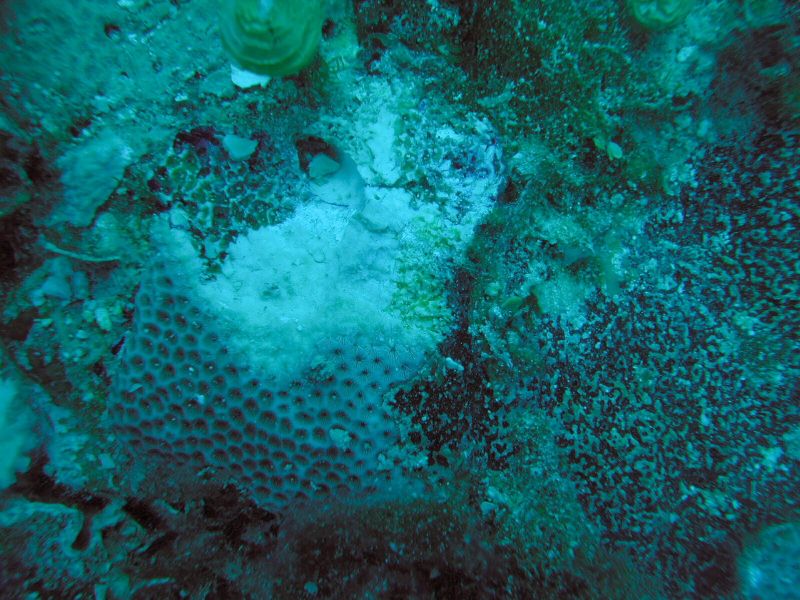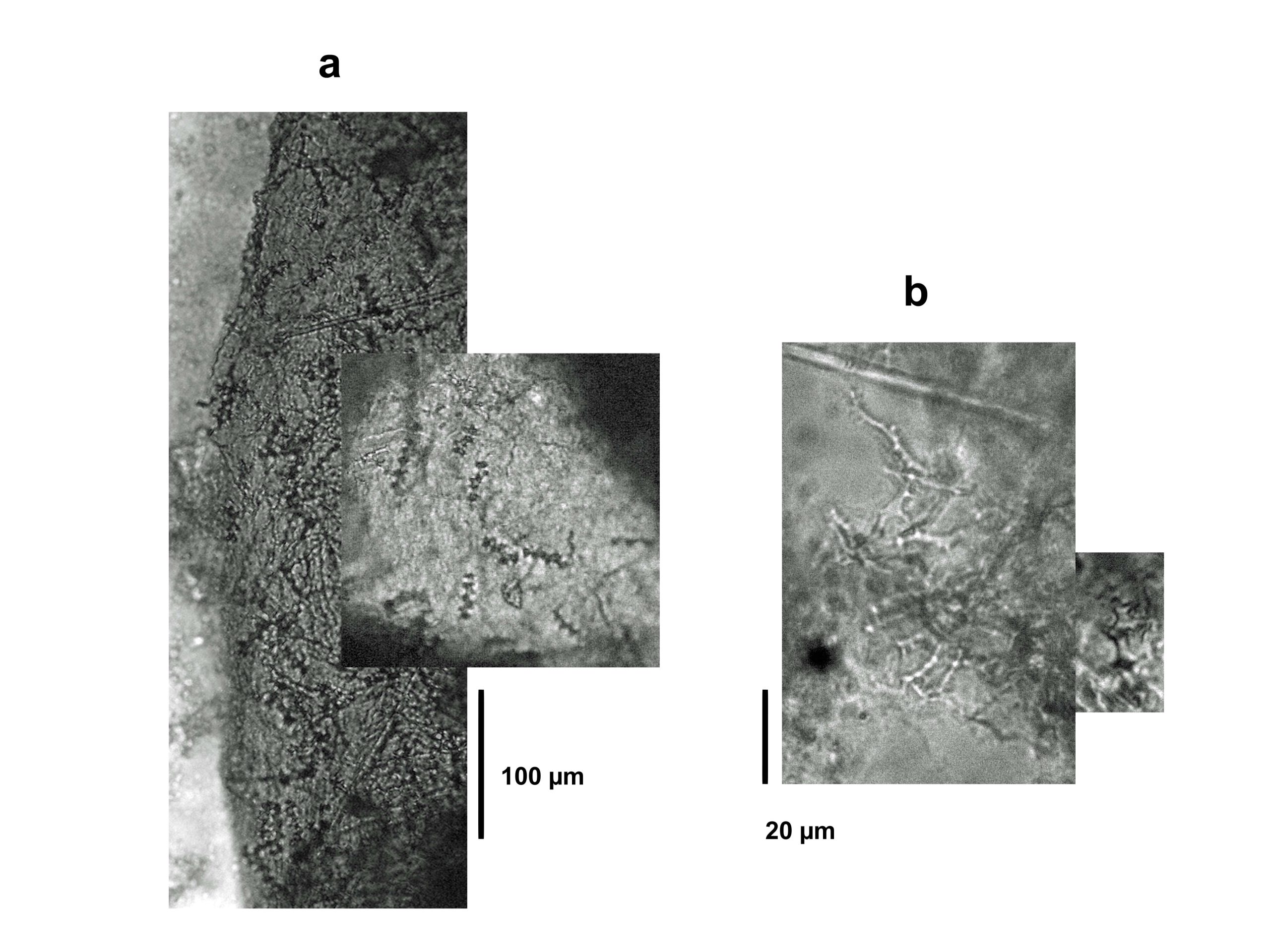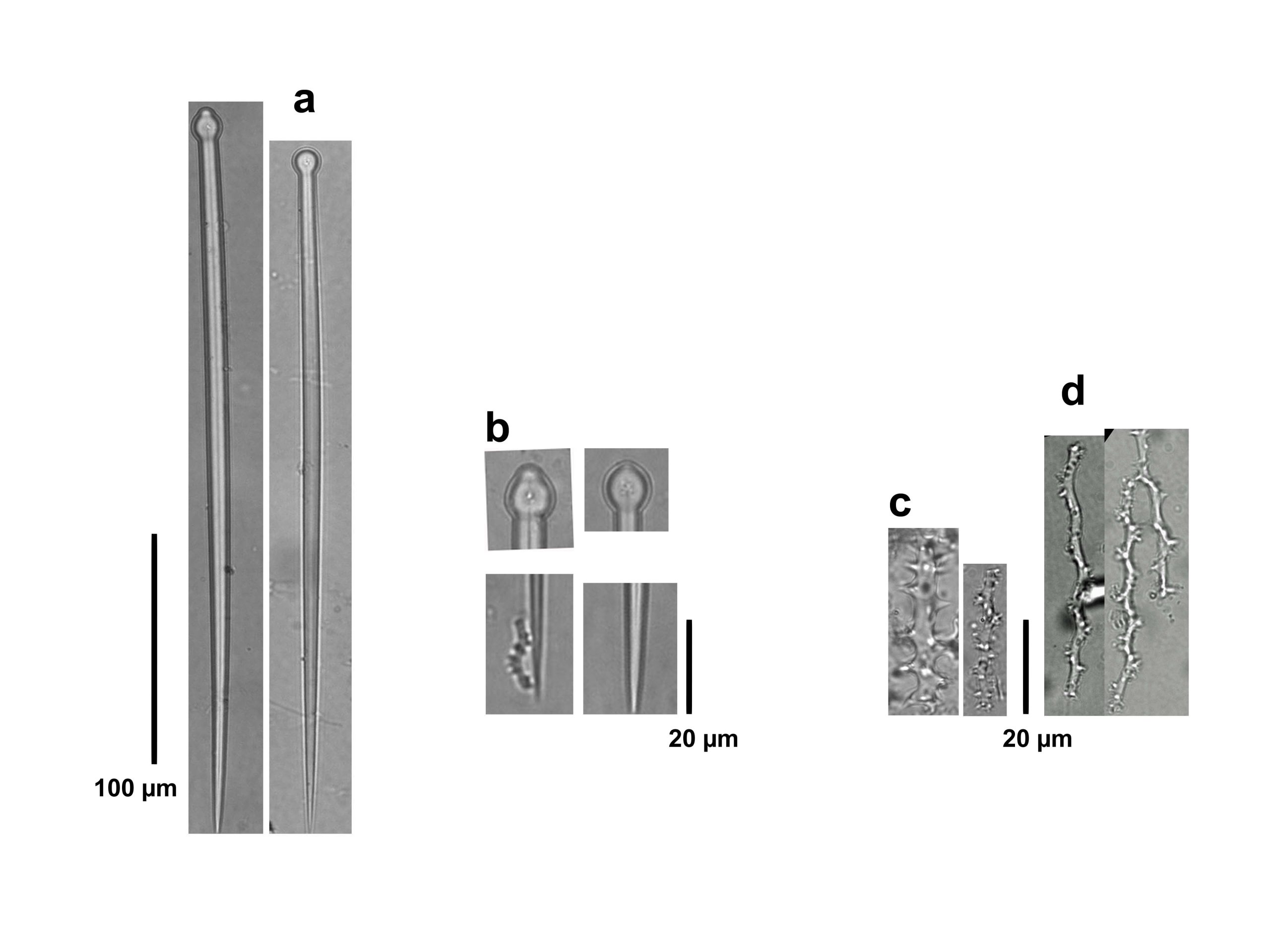Observed Characteristics:
Color:
- blue
- purple-violet
Morphology:
- papillated
Consistency:
- soft
Sample Locations:
- Bahamas
- Colombia
Cliona schmidtii

Description: Excavating sponge. Sparse, rather cryptic bright purple papillae; it was revealed to us as a deep blue soft excavating tissue, when chiseling out a piece of live coral to collect another excavating sponge (Cliona aprica Pang, 1973). The bluish-purplish color remains after fixation. Megasclere spicules are tylostyles, slightly curved, with rounded heads, sometimes a bit subterminal, and pointed tips, 260-310 µm long and 5-7.2 µm wide; heads are 9.3-10.3 µm in diameter. Microscleres spicules are spirasters in two categories; spirasters I are stout, with thick spines, 22-40 µm long and 1.7-5.2 µm wide (not including spines), with 2-5 curves; spirasters II are slim, with short spines and 4-5 or more narrow curves, reaching larger sizes, 23-55 µm long and 1.2-2.0 µm wide.
Notes: This species inhabits mid-depth to deep reefs, excavating live corals and coral rock. Our record from the Bahamas represents the only specimen we have pictured and collected. The record from Colombia come from specimens collected at Santa Marta by Arnfried Antonius in 1971 and later identified and brought to the US National Museum of Natural History in Washington D.C. by Klaus Rützler. The purple color of the papillae and the bluish-purplish color of the excavation, which remain after fixation, are characteristic of this species, as well as the two clearly separated categories of spirasters. C. schmidti was originally described from the Mediterranean Sea, occurring also in the NE Atlantic islands (Azores, Canarias, Madeira). Reports from the Caribbean Sea and the Gulf of México are considered inaccurate by the World Porifera Database, but Rützler et al. (2014, Belize) vindicated Caribbean records as conspecific with Mediterranean material (see also description from Jamaica by Pang, 1973). It remains to be determined if W. Atlantic populations are conspecific or different.
Author Reference: (Ridley, 1881)
Link: World Porifera Database


